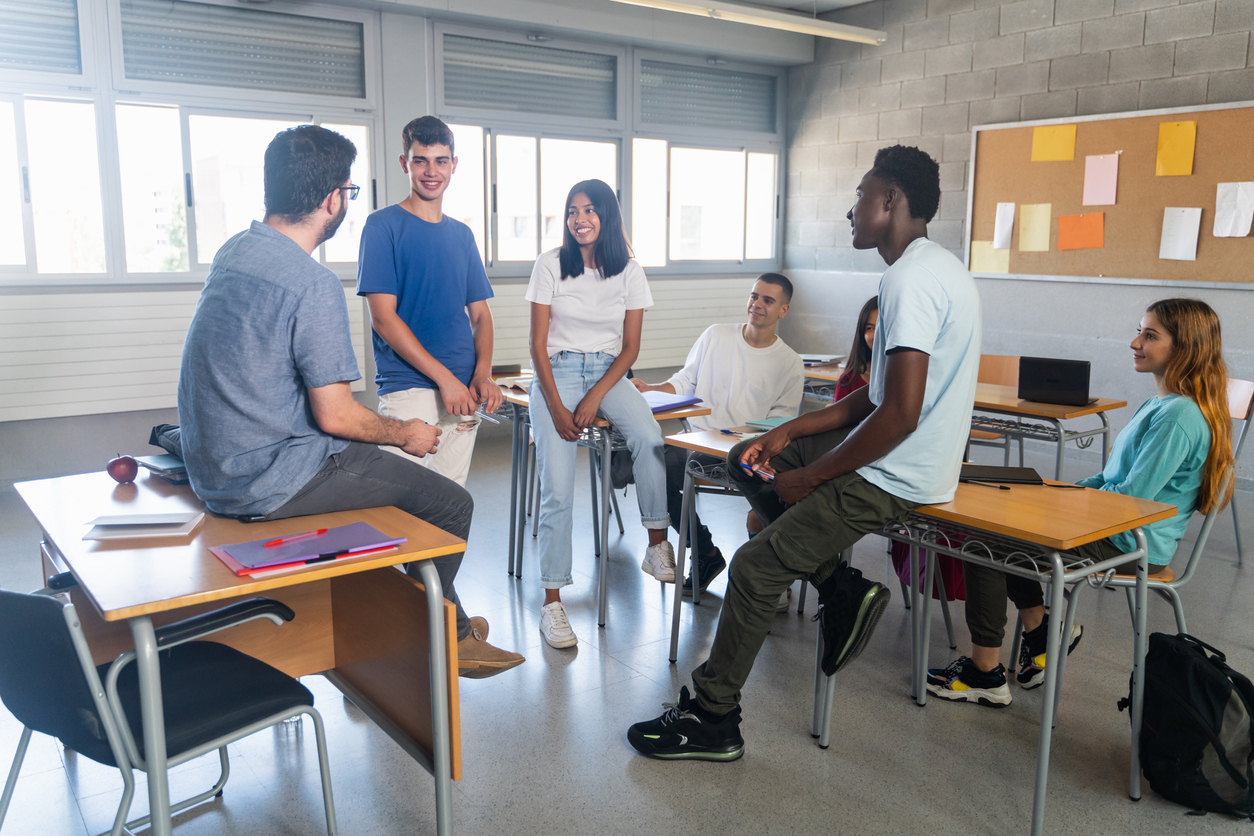
As a multidisciplinary subject, social studies classrooms are home to many different topics, from the most gruesome historical conflicts to the most basic principles of government and economics. All of these concepts are worthy of classroom discussions, and with discussion, comes debate.
Educators and students alike experience people debating topics all the time on social media and in the news, particularly during election cycles. Students even debate amongst themselves, whether they realize it or not. They often debate which athlete, pair of shoes, make-up brand, or comic book is better. They also debate about which teachers are better or worse or what school subjects are most interesting. However, most student debates are not constructive, and they often end with students insulting or personally attacking each other.
Social studies classroom can provide teachers the opportunity to teach students to have constructive debates with their peers and foster healthy civil discourse about topics in history, government, and economics. The only question that remains is how? How can we teach students to have constructive debates? The following strategies will hopefully provide some insight.
Introduce Classwide Discussions and Debates Early On
If you want to host debates in your social studies class to teach civil discourse, it is important that you introduce them to your students early in the school year. Teachers can do this in a variety of ways, but the best way to introduce debating is to explain what it is first. Set parameters for healthy discussions, ensuring that students must recognize both positive and negative sides of issues. Also be sure to define keywords associated with debates, like bias, objectivity, and rebuttal, and how they can help structure a classroom discussion. It is important to have different strategies ready to go for how the debates will be structured.
Once you explain these concepts, students will make connections to their own personal lives. After this introductory explanation, it is time to allow students to debate. A great way to get students engaged with debate is to have them debate on something that interests them personally or that is trending in social media. This will allow the students to connect with the concept on a personal level before moving to more serious topics.

Structuring Debates in the Classroom
There are many ways that you can structure classroom debates. There are simple strategies like dividing the room into two sides of one debate, or putting students into multiple groups, but there is a tried and true strategy that will work especially well for 6-8 classrooms, and that is the Four Corners Debate. For this strategy, you will need to have a topic of discussion ready to go and make four signs, with each sign saying the following:
- Agree
- Disagree
- Strongly Agree
- Strongly Disagree
- Neutral (if you want to make things a bit more interesting.)
Once you have made the signs, you need to put each of them in a corner of your classroom. Once the students come in, group them based on how they feel about the topic at hand. If you have too many students in one group, or no students in one group, you can move students around as you need to. Once students have been grouped, give them some time to research the particular topic (15-20 minutes). After the research phase is done, each group will select a speaker. The first speaker will then speak and, once they overview their stance on the topic, students in each group will have a chance to change their minds and move to a different corner of the room. This will continue once each speaker has overviewed the pros and cons of their stance. In order to include all students in the classroom, you can ask students who are not speakers the following questions:
- Why did you change your mind?
- Why did your stance NOT change?
- How did your group come to that conclusion?
- How do you feel after hearing the perspectives of your peers?
The method of assessment for debates in your class is entirely up to you, as this strategy is one of many that you can use. The Four Corners activity can also be adapted or modified in any way you see fit to best serve your curriculum.
Debating Serious or Controversial Topics
Classroom debates about personal topics are fun for students, but what about when the topics get a bit more serious? Once topics about history, government, or economics come into the picture, students can quickly lose interest. If they don’t lose interest, then the debates just might end up devolving into name calling or personal attacks (like some do in the political realm). It is important to ensure that your students understand the gravity of the issues that they will be debating in a social studies classroom. Some of topics that can inspire students and be of interest may include:
- Police brutality
- Hate crimes
- Genocide
- Civil rights
- Poverty
- Social class
You can use the strategy previously mentioned to debate serious topics, but be sure to monitor the groups closely to make sure that the debate remains cordial and productive.
Structured debate in the classroom can be incredibly beneficial and enhance your social studies curriculum. It allows students to bring their own perspectives while hearing out new ones. It also lets students connect to the content on a deeper level by thinking critically about the topics being discussed, even if it is a topic that they are not interested in. That critical thinking goes a long way for student learning and understanding in the social studies classroom.
Seeking more lessons to teach civil discourse?
Sign up for a free 30-day trial of Active Classroom
Brendan King is a blog contributor for Social Studies School Service. He loves the study of history and reading any historical work he can get his hands on. More importantly, he is passionate about teaching history and social studies in fun and unique ways. He earned his B.A. in History at the University of West Georgia and currently teaches sixth-grade social studies. His hobbies include reading, playing video games, watching movies, and exercising.
